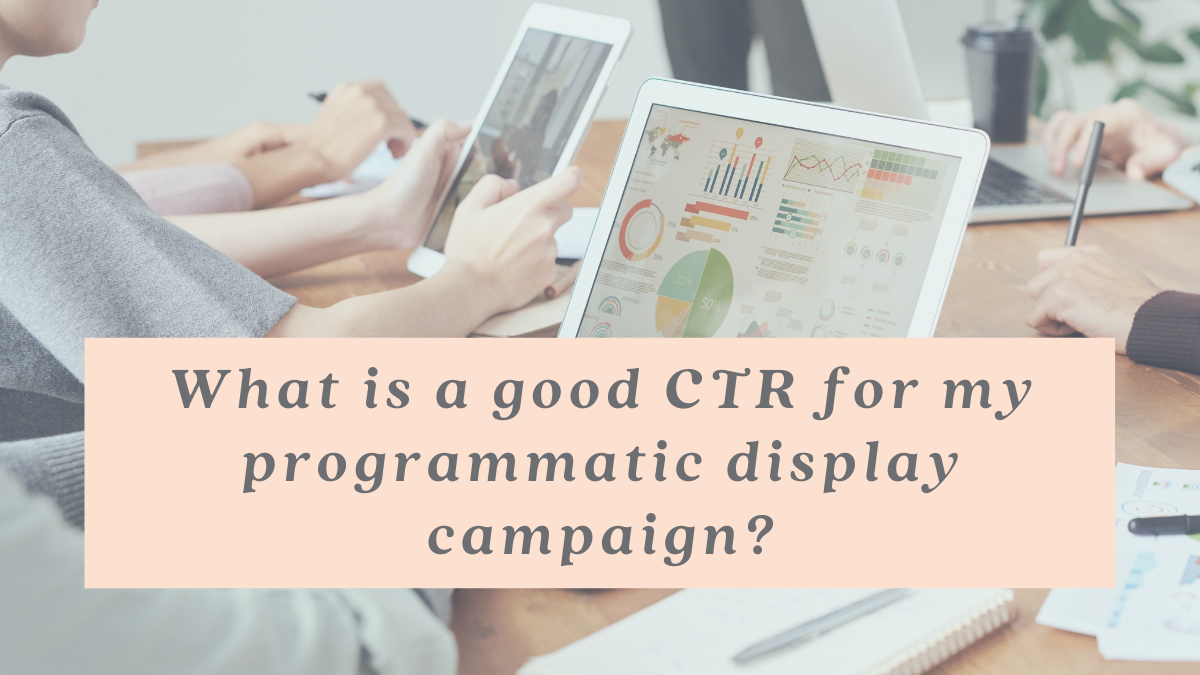This is a common question and one we don’t mind answering. However, it’s not as clear-cut as we’d all like it to be.
The click-through rate is just one of many KPI’s (key performance indicators) used in our industry and measures how often people who view an ad actually click on it. The quality of the image and message, ad positioning, keywords, and many other factors will impact your CTR — including the platform and how diligent they are at preventing bot traffic and invalid clicks.
There are dozens of articles and a handful of benchmark studies on average CTR to help marketers determine what is a good CTR. However, if you ask what a successful CTR is, there really is no clear, concrete answer. Why? See the previous paragraph: there are too many variables that come into play.
For example, running a bottom-of-the-funnel campaign to known/repeat customers will likely generate high CTRs. Running a reach-based brand awareness campaign to a cold audience probably won’t.
CTR performance is also channel-dependent. Programmatic display delivers different engagement than paid search or paid social. Let’s break down each one.
Programmatic CTR
January Spring optimizes our programmatic display campaigns to exceed the industry average of 0.08% CTR. The majority of our campaigns exceed that number by 2 or 3x. The more targeted the audience, the higher the CTR. We achieve that higher performance rate because we optimize at the individual tactic level (i.e. keyword retargeting performs differently than geofencing). We also pay close attention to the creative. You cannot re-use a print or social ad in programmatic and expect it to perform. Display ads have to be designed with a single call-to-action and a straightforward message.
Click-through rates also vary by industry. So, we use our deep bench of case studies to help you set expectations for each advertiser. We believe there is real power in showing a business what they should expect from a similar campaign rather than just giving them the generic industry stats.
Paid Search CTR
According to Wordstream, the average click-through rate on Google Ads (aka Ad Words) search network is 1.91% on search. Paid search tends to have a higher click-through rate than display advertising because the consumer is actively looking for the product or service for which they are searching. Seach is considered direct response marketing, meaning that people click or engage with an ad in response to a specific need. We see that click-through percentage increase when we pair display advertising with search ads. Why? Because we create awareness for the business and its products or services with display that then translates into the consumer being more likely to click on a search ad from that same business because they “seem” familiar.
One last thing on paid search CTRs; rank still plays one of the biggest roles in earning a high CTR. If your ad is not in a high position, it likely won’t earn a good CTR. The sweet-spot are positions 2-4. Not paying top-dollar, but not being buried “below the fold”.
Paid Social CTR
Does anyone else feel like everything with Facebook is a moving target these days? Historically, we’ve seen Facebook ads outperform Google ads. But these days, the CTR is all over the map. Pre-Apple iOS14 changes, we would have told you that a good CTR for paid social was 2%. Now, with the limited targeting data Facebook has access to and the reduced time they are assigning to conversion tracking, the performance has dropped off.
Enter you, our publishers with your first-party data targeting or January Spring device ID targeting, riding in to save the day. We rolled out our geofencing for paid social earlier this year. Not only does it provide a level of targeting your local advertisers have never had through Facebook, but it also performs better. When we couple our device ID data with our publishers’ own subscriber data, the CTRs skyrocket.

